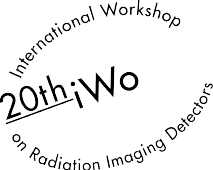Speaker
Description
The tracking system of the Circular Electron Position Collider (CEPC) [1] proposed by the Chinese particle physics community includes a high-precision silicon tracker. In order to fulfill the high precision track reconstruction, the single point resolution should be < 7 µm, the material budget < 0.65% X$_{0}$ and the radiation hardness > 1 MRad for this tracker.
A new CMOS pixel sensor based on the rolling-shutter readout is under development for the CEPC tracker by using a 180 nm CMOS imaging sensor technology [2]. The prototypes were fabricated with two different wafers in terms of the resistivity and the growing method. One is a high resistivity epitaxial layer grew on a low resistivity substrates, and another is a purely high resistivity substrate. This high resistivity based technology could result in better charge collection efficiency and improved radiation hardness. The prototypes are aimed at the investigation of the charge collection efficiency depending on various pixel geometries and pitches.
In order to explore the electric properties and optimize the sensor charge collection efficiency for this CMOS technology, the two dimensional and three dimensional Technology Computer Aided Design (TCAD) simulations have been performed carefully. The simulations have been carried out to investigate the depletion, the breakdown voltage, the leakage current, the capacitance as well as the charge collection behaviors for the different two kinds of wafers. Both the Non Ionizing Energy Loss (NIEL) and the Total Ionizing Dose (TID) effects are introduced into the simulation in order to investigate the sensor property degradation after irradiation. The above mentioned simulation results will be shown in details. Some comparisons between the simulations and the latest measurements will be addressed as well.
REFERENCES:
[1] The CEPC-SPPC study group, CEPC-SPPC preliminary conceptual design report -
volume 1: physics and detectors, (2015) [http://cepc.ihep.ac.cn/preCDR/main_preCDR.pdf ].
[2] L. Zhang, et al, Investigation of CMOS pixel sensor with 0.18 µm CMOS technology for high-precision tracking detector, 2017 JINST 12 C01011




